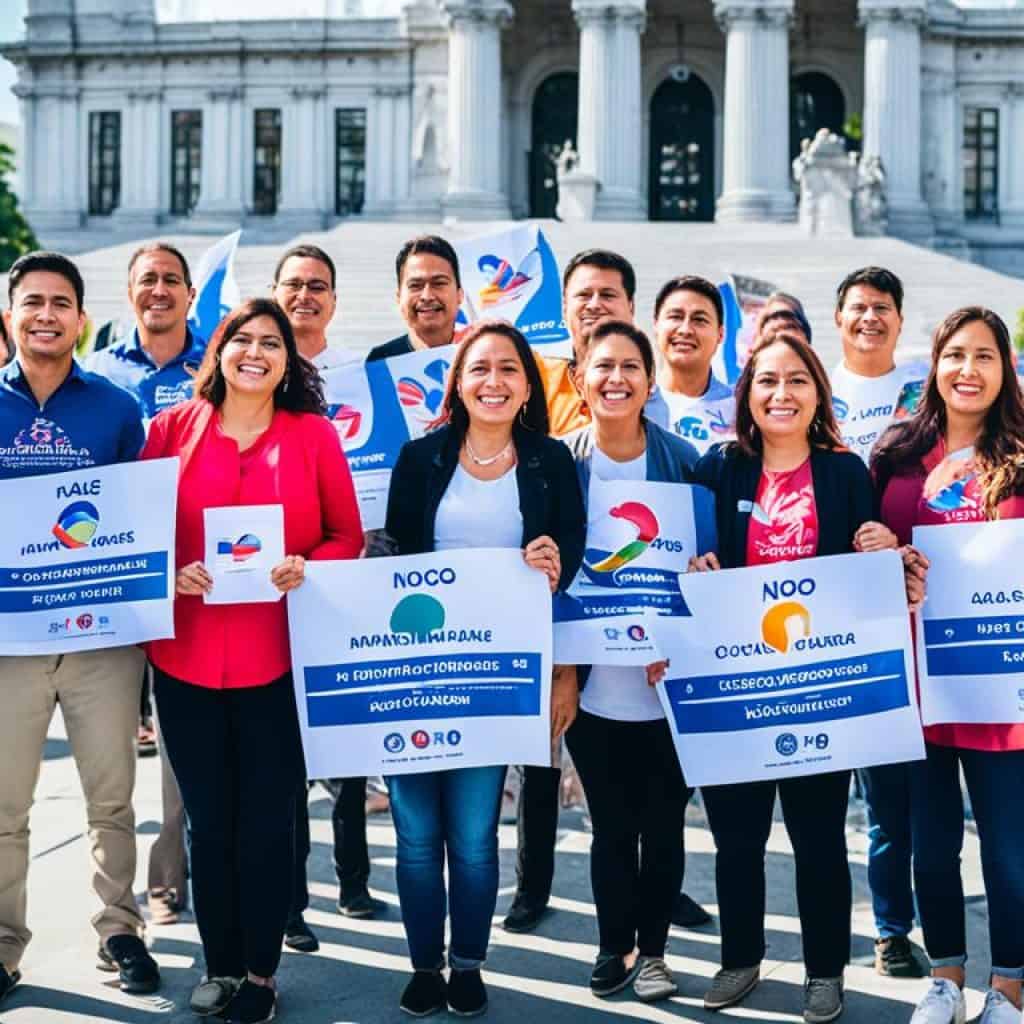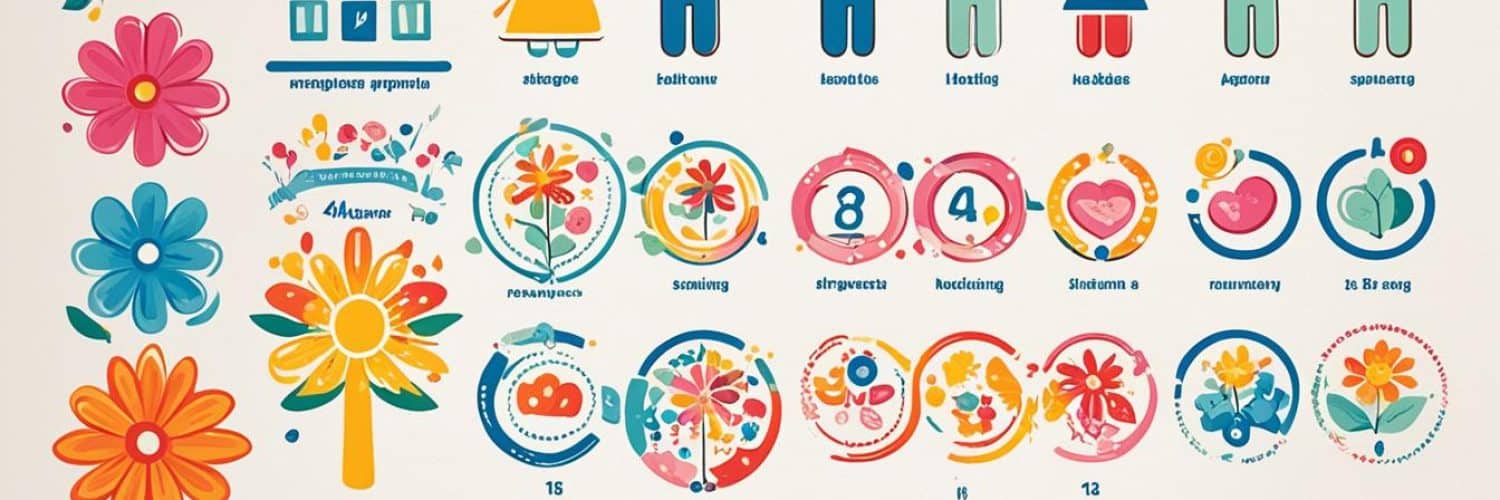Do you know the legal rules for getting married in the Philippines? With the new law, Republic Act (RA) 11596, child marriage is now banned. This law sees child marriage as abuse and wants to keep kids safe. It’s a big step, given the Philippines has one of the highest rates of child marriage in the world1.
Key Takeaways
- The legal age for marriage in the Philippines is 18 years old2.
- Individuals aged 21 to 25 require parental consent to marry, while those aged 18 to 21 need parental advice2.
- Marriage can be solemnized by various officials, including judges, priests, and ministers3.
- A marriage license is required for all marriages in the Philippines, with some exceptions3.
- Worldwide, child marriage is on the decline, with laws like the one passed in the Philippines being a crucial aspect of that movement1.
What is the Minimum Legal Marriage Age in the Philippines?
In the Philippines, the rules for the minimum legal marriage age are a bit complex. The Family Code sets the legal age of marriage at 184. But, those under 18 can’t get married, even with their parents’ okay4.
Legal Marriage Age without Parental Consent
At 21 and older, you don’t need your parents’ written okay to get married5. But, if you’re 21 to 25, you must talk to your parents or guardian before marrying. You also have to wait three months if they don’t agree5.
Exceptions and Special Circumstances
Some exceptions let people under 18 get married. This is true if they’re already pregnant or if their life is in danger5. In these cases, you still need your parents’ okay5.
| Requirement | Details |
|---|---|
| Marriage Counseling | Proof of marriage counseling is needed for those 18 to 25 before getting a marriage license4. |
| Marriage License Validity | The marriage license in the Philippines is good for 120 days from when it’s issued5. |
| Cousin Marriages | Cousin marriages are banned by the Family Code up to the fourth civil degree5. |
| Marriage Application Process | You must wait 10 straight days for the marriage application to be published5. Two witnesses over 18 must go with the couple to the civil registrar4. |
| Marriage Officiants | People who can perform marriages include priests, rabbis, imams, and others4. |
| Common-law Marriage | No license is needed for common-law marriage if a couple has lived together for five years without any legal issues4. |
The Philippines’ marriage laws aim to protect everyone, especially young people. They make sure decisions are made with careful thought and prevent abuse or exploitation54.
“Marriage is a sacred institution that should be entered into with careful consideration and consent from all parties involved. The Philippines’ marriage laws reflect the country’s commitment to protecting the rights of its citizens, particularly the most vulnerable.”6
philippines age of marriage
The legal age for marriage in the Philippines has changed a lot lately. Before RA 11596, you had to be 18 to get married, as the Family Code said7. Now, child marriage is banned, seen as abuse that goes against kids’ rights and dignity8.
Now, you must be 18 to get married in the Philippines, unless there are special reasons7. This rule is to keep young people safe and make sure the country follows human rights rules.
In the Philippines, many indigenous groups let people marry at 15, seeing it as when they are sexually mature7. This shows how different cultures are and the need for a careful approach. It should respect everyone’s rights and traditions.
Raising the marriage age is part of a worldwide effort to stop child marriage, seen as a human rights issue7. The Philippines is working to make marriage laws better to protect its young people.
As the Philippines deals with marriage age rules, it’s key to balance legal standards with cultural traditions. This way, the country can help its young people, especially girls, make good choices for their lives and futures879.
Recent Law Prohibiting Child Marriage
In January 2022, the Philippines passed Republic Act (RA) 11596. This law bans child, early, and forced marriage10. It sees child marriage as a crime against kids’ rights and their dignity.
Penalties for Facilitating Child Marriages
Now, those who help or arrange child marriages face tough penalties10. This includes parents, step-parents, and guardians of the kids10. The law shows the government’s strong stance on protecting kids and their rights.
By 2017, 1 in 6 Filipino girls were married young11. The Philippines has a lot of child marriages, ranking 12th worldwide11. RA 11596 aims to stop this and keep kids safe from child marriage’s dangers.
Girls who marry young often drop out of school and face abuse11. They’re also at higher risk of health problems during pregnancy and childbirth11. Their babies are also more likely to die in the first month11.
The Philippines sets the marriage age at 18, as per the Family Code10. RA 11596 makes it clear that those who arrange child marriages will be punished10. This includes those who perform the marriage and family members of the child10.
World Vision works to protect children and make sure RA 11596 is followed10. The COVID-19 pandemic has made child marriage more likely, especially for girls10.
This new law is a big step towards ending child marriage in the Philippines10. It’s a move to protect the rights and well-being of young people.
Factors Contributing to Child Marriage
Child marriage is still a big problem in the Philippines. Poverty and economic struggles push families to marry off their children early. They see it as a way to get out of financial trouble or to get help from aid groups121314.
Culture and tradition also play a big part. In some places, marrying off girls young is seen as keeping family honor and controlling girls’ lives. Parents arrange these marriages without asking the girls, and girls may see it as a way to help their families12.
Girls not having good education and not being able to make their own choices also help child marriage happen12. Being forced to move because of war or natural disasters makes things worse. Child marriages can be used to get shelter or aid12.
Child marriage has many bad effects. Girls get pregnant too early, stay poor, stop going to school, face health problems, and become isolated12. We need to work together to fix this. We should focus on giving girls better education, helping parents, and creating safe places for girls12.
“Child marriage is linked to gender and economic inequality. It’s a complex issue. We need a strong, community-focused plan to fight it. We must address the root causes and offer better choices for girls.”12
Impact of Child Marriage on Girls
Child marriage in the Philippines is very harmful for young girls. It brings health risks like early pregnancy, infections, and violence15. Girls also miss out on school, which limits their future chances15. This can trap them in poverty and keep child marriage going.
Health Risks and Domestic Violence
Every year, 12 million girls get married too young15. About 650 million women today were married as teens15. These young girls face big health dangers, like early pregnancy and death15. They also risk domestic violence, hurting their health and minds.
Education and Development Obstacles
Child marriage hurts girls’ health and stops them from learning and growing. Around 21% of girls worldwide are married young15. Without education, girls are more likely to marry early15. This means they miss out on their chance to reach their goals, keeping them in poverty.
“Child marriage robs girls of their childhood and jeopardizes their future. We must work together to end this harmful practice and empower girls to reach their full potential.”
Child marriage affects girls in many ways. It’s a big problem that needs help from governments, communities, and groups around the world15. By focusing on girls’ education and health, we can stop child marriage and make a better future for everyone.
Government Efforts to End Child Marriage
The Philippine government has made big moves to stop child marriage. They passed RA 11596, the Prohibition of Child Marriage Act, which makes child marriage illegal16. This law says child marriage is any union with people under 1816.
The Philippines also joined the End Violence Partnership as a Pathfinding Country16. This shows they’re serious about ending violence against kids, including child marriage16. They’ve set up a strong network of child protection services, like Women and Child Protection Units in almost every province, to help kids16.
Joining Global Initiatives
The Philippine government is working with the world to stop child marriage16. Being part of global efforts gives them resources and support to make a real change16. These partnerships also boost the work of local groups fighting for girls’ rights16.
It’s important to fully apply the Prohibition of Child Marriage Act to keep girls safe and let them reach their goals16. The law has strict rules for those who help or perform child marriages, with fines and jail time16.
“If no action is taken, more than 150 million girls will become child brides by 2030,” warns Plan International16.
The Philippine government’s actions show a strong plan to stop child marriage16. By focusing on protecting and empowering girls, they’re working towards a future where all children can succeed16.
Cultural Traditions and Norms
In the Philippines, cultural traditions and norms have a big impact on child marriage. These beliefs and practices keep this harmful practice going17. For example, people think child marriage keeps the family’s honor safe and follows religious and cultural beliefs17. Changing these beliefs is key to stopping child marriage in the Philippines.
The Philippines values family a lot, with often three generations living together17. Grandparents often help raise their grandkids17. But, things have changed since the 1970s, with many families moving around the world for work17. Now, many families are spread out, with parents working abroad to support their families back home17.
These cultural norms shape dating and marriage in the Philippines17. Dating starts with a courtship, where a man tries to win a woman’s heart, then moves to dating if she says yes17. Marriage is a big deal, influenced by Catholic traditions, and having children outside marriage is looked down upon17. This has led to child marriage in some places, where old beliefs and customs are more important than the law.
| Traditional Filipino Family Structure | Changing Family Dynamics |
|---|---|
|
|
To fight child marriage in the Philippines, we need a big plan18. This means education, community projects, and talking with leaders to change old beliefs18. By helping communities, especially girls, and changing how people think, the Philippines can stop this harmful practice.
“Addressing the deeply-rooted cultural traditions and norms that perpetuate child marriage is crucial for the Philippines to effectively eliminate this harmful practice and protect the rights of young girls.”
Economic Drivers of Child Marriage
Poverty is a big reason why child marriage happens in the Philippines. For families in deep poverty, marrying off a child seems like a way to get out of debt or gain from the dowry system19. But, this choice actually keeps the family in poverty and takes away the rights and chances of children, especially girls.
Poverty Alleviation and Debt Settlement
In the Philippines, poverty and child marriage are closely linked. Families in financial trouble might marry off their young daughters hoping to ease their money worries19. This belief that child marriage helps financially often ends badly, keeping girls in poverty and taking away their education, health, and happiness.
To stop child marriage, we need to fix the poverty problem. Giving cash help to families19, supporting girls’ education19, and fighting domestic violence19 can help. These actions empower families and communities to choose what’s best for their children, especially girls.
Culture and tradition also play a part in child marriage, but money issues are a big reason too20. By helping families with their money problems and offering better choices, we can stop child marriage in the Philippines. This lets girls reach their full potential.
“Ending child marriage and securing girls’ rights can lead to a fairer, more secure, and prosperous future.”
Marriage Requirements and Processes
Getting married in the Philippines means you must meet certain legal requirements and have specific documents22. The marriage license is good for 120 days after it’s given22. U.S. citizens must take pre-marital counseling classes22. You can choose between a civil or church wedding, each with its own rules22.
Legal Documents Needed
To marry legally in the Philippines, you need certain documents22. You must be 18 or older to get married, with extra steps for those 18 to 2522. Marriage is not allowed between relatives, same-sex couples, or minors, as stated in the Family Code22.
Common-law marriage happens after five years of living together with no legal issues22. Filipinos and U.S. citizens need documents like birth certificates and valid IDs22. If you’re 18-21, you need an affidavit of parental consent; if 22-25, an advice affidavit is required22.
Foreigners must get a “Certificate of Legal Capacity to Contract Marriage” from their embassy before applying23. You’ll also need to apostille your U.S. marriage documents for use in the Philippines22.
The process of getting a marriage license takes ten days from application to getting it23. The license is valid for 120 days23. Government fees average $1305, with a wait of 18 to 24 months as of April 1, 202423. There’s a faster option for U.S. Citizen Petitions, cutting the wait to 6-8 months23.
The Philippine Embassy can solemnize marriages for Filipino citizens, following Philippine laws24. Marriage licenses and Certificates of Legal Capacity to Contract Marriage are valid for 120 days24. If not used within the time frame, they are canceled24.
Marriage applications must be posted for ten days before the license is given24. You need to plan with the Civil Registry Section and provide witness details24. There’s a $25.00 Marriage License fee and a $60.00 Solemnization Fee24.
You’ll need to provide a Marriage License Application Form, birth certificates, and other documents24. Depending on your situation, you might need more documents24. For those 18-21, you need an Affidavit of Parental Consent; for 22-25, an Affidavit of Parental Advice24.

Regional Variations in Marriage Laws
RA 11596 has made child marriage illegal nationwide in the Philippines. But, there might be some differences in how these laws work in each region25. Local areas might have their own rules for marriage that are a bit different from the national laws. It’s important for couples to know these differences if they want to get married in the Philippines.
In the Philippines, the Code of Muslim Personal Laws says you can get married at 15 if you’re a boy and 12 if you’re a girl and you’ve hit puberty25. But, the Family Code says everyone must be 18 before they can get married25. These different rules show how marriage laws can change from place to place in the Philippines.
Also, different Islamic scholars have different views on when you can get married, from 15 to 18 years old for both boys and girls25. These beliefs can also affect how marriage laws work in different parts of the Philippines.
| Region | Minimum Marriage Age | Exceptions |
|---|---|---|
| Autonomous Region in Muslim Mindanao (ARMM) | 15 for males, 12 for females who have reached puberty | Parental consent required for those under 18 |
| Rest of the Philippines | 18 for both males and females | Parental or judicial consent required for those under 18 |
It’s key to know about these differences in marriage laws if you’re planning a wedding in the Philippines26. Knowing what’s needed and what’s allowed in different places can make getting married smoother and easier.
These differences can lead to child marriages, especially where culture is very strong26. This is true in the Philippines, where laws based on religion or tradition might be more important than national laws27.
To fix this, the government and groups that help society need to work together27. They should make sure marriage laws in the Philippines match up with human rights standards. This will help protect the rights of women and girls.
Consequences of Violating Marriage Laws
In the Philippines, a new law, Republic Act No. 11596, has made child marriage a serious crime28. This law aims to stop child marriage, a long-standing issue in the country29.
Those who break the law can face big penalties. People who help arrange child marriages can be jailed for 12 years and fined a lot of money29. This is to stop child exploitation and protect kids’ rights to education and health.
Breaking the marriage laws in the Philippines also means facing social shame. Child marriages are seen as a violation of the child’s rights and a sign of harmful gender norms and power imbalances.30
The government is working to stop child marriage by tackling poverty and gender issues29. They’re investing in programs that help girls get an education and fight for gender equality. This way, child marriage won’t be an option anymore.
“The consequences of violating the marriage laws in the Philippines can be severe, both legally and socially. It is our collective responsibility to ensure that the rights of children are protected and that they are given the opportunity to thrive, free from the burden of early marriage.”
In conclusion, breaking marriage laws in the Philippines has big consequences. The new law and efforts to fix the root problems show that child marriage won’t be allowed. By following the law and changing society, the Philippines can make sure all children have a childhood without early marriage.
Support Services for Victims of Child Marriage
If you or someone you know has been affected by child marriage in the Philippines, help is available. The government and NGOs offer legal aid, counseling, and rehabilitation programs313233.
The government has set up Women and Child Protection Units in almost every province. These units help with cases of abuse and violence, including child marriage31. They provide a safe place and resources for those in need.
The Department of Social Welfare and Development (DSWD) runs 11 “homes for girls” across the country32. These homes offer counseling, skills training, and help with legal issues for victims of child marriage.
Recently, the Philippines passed RA No. 11596 to stop child marriage33. This law makes child marriage illegal and has strict rules for those who perform or arrange it. It also requires the DSWD to create programs to fight this issue.
Many NGOs in the Philippines also help victims of child marriage3233. They offer legal help, emotional support, and work to spread awareness about this harmful practice.
If you or someone you know needs help, contact the right authorities or NGOs3233. We can all work together to stop child marriage and create a better future.
Role of NGOs in Advocacy
NGOs are key in fighting child marriage in the Philippines. They work with the government to create policies that protect children34. This helps tackle the big issue of child marriage.
NGOs lead awareness campaigns to teach people about child marriage’s dangers. They show why it’s important to protect children’s rights and well-being35. These efforts aim to change social views and support girls’ education over early marriage34.
Awareness Campaigns
In the Philippines, NGOs run awareness campaigns to highlight child marriage and gain support for ending it. They work with local groups, schools, and leaders to spread the word and start conversations34.
Groups like Voice of Peace, Community Initiative for Development, and Joint Aid create safe spaces for women and girls. These spaces tackle forced and early marriage and push for girls’ education34.
Through these efforts, NGOs help people like Lucia and Sadia. Lucia made sure her daughters went to school, not got married early. Sadia delayed her daughter’s marriage to focus on her education after learning from NGOs34.
NGOs also help those in tough spots, like Nya and Regina, who faced abuse after losing their husbands. With help from groups like Community Initiative for Development and Joint Aid Management, they beat suicidal thoughts and started successful projects. This shows how NGOs can change lives34.

NGOs do more than just spread the word about child marriage. They work with the government and global organizations to push for policy changes and effective programs35. For example, the Integrated SDGs Solutions Platform for Bangsamoro plans to end child, early, and forced marriage by 2030. The UNFPA Philippines supports projects like the Panginam project. This project fights child marriage with job skills, life skills training, and mental support35.
By working together with different groups, NGOs in the Philippines are key in making people aware, pushing for policy changes, and supporting big efforts to stop child marriage. They help girls and women gain power3534.
Future Outlook and Challenges
RA 11596, the law banning child marriage in the Philippines, is a big step forward for child rights36. Yet, the country still has to overcome many hurdles to make this law work well. It needs to tackle the social, cultural, and economic reasons why child marriage still happens36.
Changing old cultural beliefs that see child marriage as normal is a big challenge36. It will take a lot of effort from the government, civil groups, and everyone in the community36. We need education campaigns, community talks, and leaders from religion and community to help change minds. They must teach the importance of waiting until you’re an adult to get married36.
Poverty and lack of money are big reasons why child marriage happens in the Philippines36. To stop this, we must fight poverty with programs that help families and give kids good education and jobs36.
It’s also important to make sure RA 11596 is followed well36. This means training police, making reporting systems better, and making sure those who break the law face consequences36. Working together between government, NGOs, and local groups is key36.
Even with the challenges, the fight against child marriage in the Philippines looks hopeful36. With the government, civil society, and the world’s support, we can use RA 11596 to protect all children from child marriage36.
“Eliminating child marriage in the Philippines is a complex challenge, but one that we are dedicated to addressing through a comprehensive, multi-stakeholder approach. By working together, we can create a brighter future for the nation’s children.”
Conclusion
The Philippines has taken big steps to stop child marriage with a new law37. This law sees child marriage as abuse and has rules for those who help or arrange it. Even though the marriage age is now 18, with some exceptions, the country still has work to do. It needs to enforce the law better and tackle the social, cultural, and economic reasons behind child marriage38.
Working together between the government, NGOs, and everyone in the community is key to a better future for the Philippines’ children38. This will help make a safer, fairer place for everyone.
Even with recent progress, child marriage is still a big issue in the Philippines37. In places like the Autonomous Region in Muslim Mindanao, child marriage is very common38. This shows we need to understand and tackle the deep reasons why child marriage happens38.
We must keep working to spread awareness, offer education and support, and empower communities to fight child marriage38. This will help bring about lasting change.
As the Philippines updates its laws to protect children, it’s important these changes really help the most at-risk groups37. By tackling poverty, gender bias, and harmful social norms, the country can aim for a future where all children can grow and reach their goals.
FAQ
What is the minimum legal marriage age in the Philippines?
Are there any exceptions to the legal marriage age in the Philippines?
What is the recent law that prohibits child marriage in the Philippines?
What are the factors that contribute to the prevalence of child marriage in the Philippines?
What is the impact of child marriage on girls in the Philippines?
How is the Philippine government addressing the issue of child marriage?
What is the role of NGOs in addressing child marriage in the Philippines?
What are the challenges in fully implementing the law that prohibits child marriage in the Philippines?
Source Links
- https://www.linkedin.com/pulse/philippines-bans-child-marriage-zachary-karabell
- https://www.lauraguidi.pl/what-is-the-legal-age-in-philippines-age-of-majority-consent-laws/
- https://elibrary.judiciary.gov.ph/thebookshelf/showdocs/28/54455
- https://tripsupport.ca/blog/what-are-the-requirements-to-marry-a-filipino/
- https://www.brides.com/get-married-in-the-philippines-2303484
- https://assets.pewresearch.org/wp-content/uploads/sites/12/2016/09/FT_Marriage_Age_Appendix_2016_09_08.pdf
- https://en.wikipedia.org/wiki/Marriageable_age
- https://psa.gov.ph/statistics/vital-statistics/node/1684061650
- https://psa.gov.ph/content/2019-philippine-marriage-statistics
- https://www.worldvision.org.ph/world-vision-lauds-new-philippine-law-prohibiting-child-marriage/
- https://www.unicef.org/philippines/press-releases/passage-prohibition-child-marriage-law-major-milestone-child-rights
- https://www.rappler.com/newsbreak/iq/things-to-know-causes-child-marriage-barmm/
- https://www.worldvision.org.ph/research_reports/the-role-of-faith-norms-in-child-marriage/
- https://bmcwomenshealth.biomedcentral.com/articles/10.1186/s12905-023-02634-3
- https://www.worldvision.org/child-protection-news-stories/child-marriage-facts
- https://newsinfo.inquirer.net/1846696/ending-child-marriage-in-ph-takes-more-than-a-law
- https://culturalatlas.sbs.com.au/filipino-culture/filipino-culture-family
- https://www.savethechildren.org.ph/our-work/our-stories/story/good-and-bad-traditions-for-children/
- https://humanrights.berkeley.edu/projects/preventing-child-marriage-in-humanitarian-settings/
- https://walkfree.org/global-slavery-index/findings/spotlights/understanding-forced-and-child-marriage/
- https://www.girlsnotbrides.org/about-child-marriage/
- https://www.travelvisapro.com/blog/passports/how-to-get-married-in-philippines-as-a-u-s-citizen
- https://www.fickeymartinezlaw.com/immigration/consular-processing/us-citizens-guide-to-marrying-in-the-philippines-and-immigrating-a-philippine-filipina-spouse-to-the-united-states
- https://philippineembassy-dc.org/wp-content/uploads/2022/07/SOLEMNIZATION-OF-MARRIAGE.pdf
- https://eudl.eu/pdf/10.4108/eai.20-10-2021.2316347
- https://www.unwomen.org/sites/default/files/2023-09/legislating-and-enforcing-the-minimum-age-of-marriage-a-comparative-study-of-experiences-and-lessons-learned-en.pdf
- https://www.ohchr.org/sites/default/files/Documents/Issues/Women/WRGS/Earlyforcedmarriage/NGOs_Individuals/CRR1.pdf
- https://www.newsweek.com/philippines-bans-child-marriage-while-44-us-states-allow-it-1666658
- https://www.hurights.or.jp/archives/focus/section3/2022/06/enforcing-the-law-against-child-marriage.html
- https://plan-international.org/uploads/sites/25/2022/03/Our-Voices-Our-Future-Fact-Sheet.pdf
- https://preventforcedmarriage.org/forced-marriage-overseas-philippines/
- https://newsinfo.inquirer.net/1869406/child-marriages-in-ph-it-takes-a-village-to-also-commit-abuse
- https://www.dswd.gov.ph/dswd-development-partners-join-hands-to-curb-child-marriage/
- https://pooledfunds.impact.unocha.org/stories/local-ngos-working-to-prevent-child-marriage-and-forced-marriage
- https://reliefweb.int/report/philippines/empowering-maranao-girls-against-child-marriage
- https://tspace.library.utoronto.ca/bitstream/1807/126576/3/Dayot-Nepomuceno_Gracie_V_202211_Dmin_thesis.pdf
- https://www.rappler.com/voices/thought-leaders/opinion-changing-untold-narrative-child-brides/
- https://reliefweb.int/report/philippines/philippines-early-marriage-puts-girls-risk







Add comment